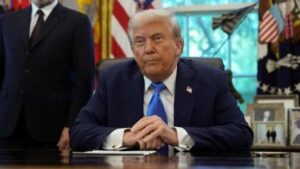
Introduction
Former U.S. President Donald Trump has announced a new rule: companies must pay a $100,000 annual fee for every H-1B visa. This is a big change from the current system, where fees were much lower. The H-1B visa is mainly used by U.S. companies to hire skilled workers from countries like India and China, especially in technology and research.
This article looks at the pros and cons of Trump’s $100,000 H-1B visa fee and what it means for the U.S. economy, businesses, and workers.
What is the $100,000 H-1B Visa Fee?
-
Announced on September 19, 2025
-
Companies must pay $100,000 every year per H-1B worker
-
Goal: Encourage hiring of American workers and reduce reliance on foreign talent
-
Expected impact: Fewer H-1B applications and higher costs for businesses
Pros of Trump’s $100,000 H-1B Visa Fee
1. More Jobs for American Workers
The new rule may push companies to hire U.S. citizens and permanent residents instead of foreign workers.
2. Higher Wages for U.S. Employees
Employers can no longer save money by paying less to H-1B workers. This could help raise wages for American professionals.
3. Reduce Misuse of the H-1B Program
The high fee makes it harder for companies to misuse the visa system. Only serious employers with real needs will apply.
4. Revenue for the Government
This new fee could bring in billions of dollars, which can be used for job training and education programs.
5. Focus on High-Skill Jobs
Since the fee is so high, only the most valuable and highly skilled workers are likely to be hired through H-1B visas.
Cons of Trump’s $100,000 H-1B Visa Fee
1. Loss of Global Talent
U.S. companies may struggle to bring in skilled workers in science, technology, and research. This can slow down innovation.
2. Bad for Startups and Small Companies
Big corporations can afford the fee, but startups and small businesses may not. This hurts competition and creativity.
3. Risk of Jobs Moving Overseas
Instead of paying $100,000 per visa, companies might move jobs to countries like India or Canada.
4. Legal and Political Problems
Experts say such a big fee might not be legal without Congress approval. Lawsuits could delay or cancel the rule.
5. Diplomatic Tensions
Countries like India, which send many skilled workers to the U.S., may see this as unfair. It could affect trade and relations.
Likely Impact on the U.S.
-
Fewer H-1B applications due to high cost
-
Shift toward high-paid roles only
-
Possible job outsourcing to other countries
-
More pressure on U.S. education system to train workers
-
Uncertainty until courts or Congress decide on the legality
Conclusion
Trump’s $100,000 H-1B visa fee is one of the biggest changes in U.S. immigration policy. Supporters believe it will protect American jobs and raise wages. Critics warn it could hurt innovation, push jobs overseas, and make the U.S. less attractive to global talent.
The final outcome depends on how companies, courts, and foreign governments react. What is clear is that this decision will reshape the future of U.S. immigration and the job market.
For more News : https://apnews.com/article/8d39699d0b2de3d90936f8076357254e? ,
Impact of New H1-B Visa Fee on India :https://windowsglassrgi.com/wp-admin/post.php?

